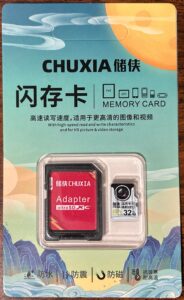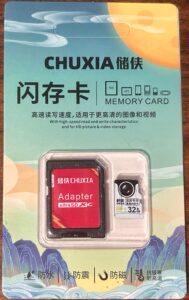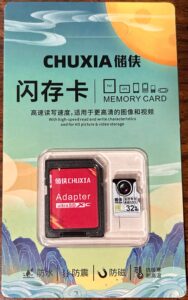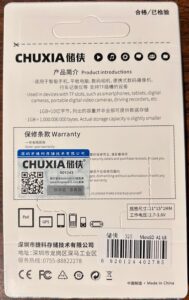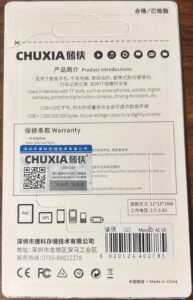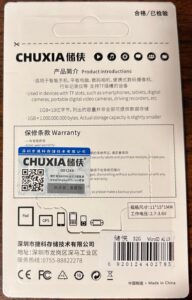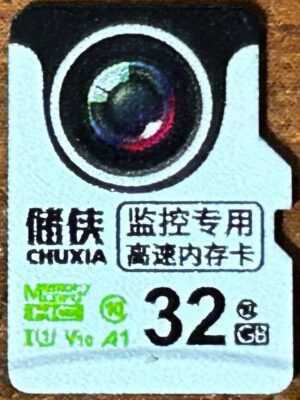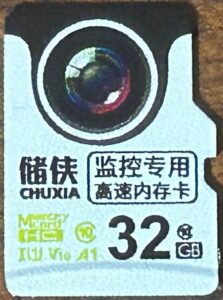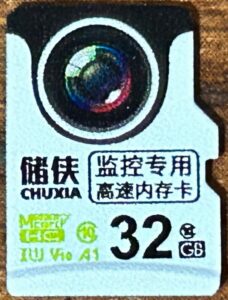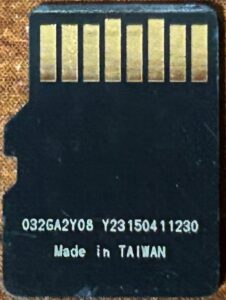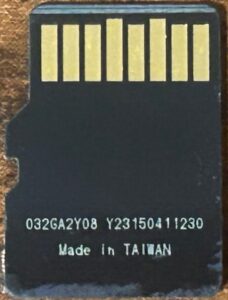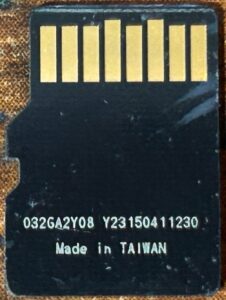- Obtained from: AliExpress
- Price paid: $5.78
- Advertised capacity: 32GB
- Logical capacity: 31,719,424,000 bytes
- Physical capacity: 31,719,424,000 bytes
- Fake/skimpy flash: Skimpy (0.88% skimp)
- Protected area: 83,886,080 bytes
- Adjusted skimp: 0.61%
- Speed class markings: Class 10, U1, V10, A1
- CID data:
- Manufacturer ID:
0xad - OEM ID:
0x4c53(ASCII:LS) - Product name:
0x5553443030(ASCII:USD00) - Product revision:
0x10 - Manufacture date: Apr 2023
- Manufacturer ID:
Discussion
Chuxia is another brand that took a little bit more digging to find, but caught my attention because of its original design.
I’m honestly not sure why I got such wildly different results between the different samples, especially on the random read test. If the random read speed for sample #2 is accurate, it would be the highest random read speed of any card I’ve tested so far. However, the fact that the other two performed so terribly in comparison makes me think that this was a fluke. The CID registers on all three samples were identical (except for the serial number), so I don’t think sample #2’s results could easily be attributed to a different model or different manufacturer. If you include Sample #2’s figures, this card performed average in random read speeds. If you exclude them, this card performed well below average (by more than one standard deviation). Either way you look at it, the card performed below average on sequential read and sequential write speeds, and well above average (more than one standard deviation) on random write speeds. All three performed well enough to qualify for the Class 10, U1, and V10 markings; however, only sample #2 performed well enough for the A1 marking.
All three samples are still undergoing endurance testing; however, the results so far were not too great, with two of the three experiencing errors before hitting the 2,000 read/write cycle mark:
- Sample #1’s first error was four-sector wide corrupted data error during round 1,384. It has survived 6,387 read/write cycles in total so far.
- Sample #2 is the only one that made it past the 2,000 read/write cycle mark without errors. It had its first error — which was a series discontiguous corrupted data errors — during round 4,339. It has survived 9,066 read/write cycles in total so far.
- Sample #3’s first error was a six-sector wide address decoding error during round 114. It has survived 4,227 read/write cycles in total so far.
My conclusion: eh. These cards aren’t the greatest performers. They’re not the worst performers by far — but there are better options out there for the money.
June 15, 2024 (current number of read/write cycles is updated automatically every hour)


